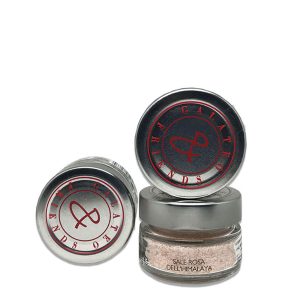The Khewra Salt Mine is excavated within the base of a thick layer of highly folded, faulted, and stretched Ediacaran to early Cambrian evaporites of the Salt Range Formation. This geological formation consists of a basal layer of crystalline halite, which is intercalated with potash salts. This basal layer is overlain by gypsiferous marl, which is covered by interlayered beds of gypsum and dolomite with infrequent seams of oil shale. These strata are overlain by 200 to 500 meters (660 to 1,640 ft) of Neoproterozoic to Eocene sedimentary rocks that have been uplifted and eroded along with the Salt Range Formation to create the Salt Range at the southern edge of the Pothohar Plateau. The Ediacaran to early Cambrian evaporites of the Salt Range Formation have been thrust southward over Neoproterozoic to Eocene sedimentary rocks by many kilometers, which tectonically incorporated fragments of the underlying younger strata within these evaporites. The Salt Range is the southern edge of a well-described fold-and-thrust belt, which underlies the entire Pothohar Plateau and developed south of the Himalayas as a result of ongoing collision between India and Eurasia.
Palynomorphs (organic microfossils) have been used to make inferences about the ages of the Salt Range Formation and its salt layers that are exposed within the Khewra Salt Mine. For example, while working with Geological Survey of India in the 1930s and 1940s, Birbal Sahni reported finding evidence of angiosperms, gymnosperms, and insects inside the mine which he regarded as originating from the Eocene period. However, on the basis of additional geologic data, later research has concluded that these palynomorphs were contaminants.
Estimates of the total reserves of salt in the mines range from 82 million tons to over 600 million tons. In raw form it contains negligible amounts of calcium, magnesium, potassium, sulfates, and moisture; it also contains iron, zinc, copper, manganese, chromium, and lead as trace elements. Salt from Khewra, also known as Khewra salt, is red, pink, off-white or transparent. In the early years of British rule, the Khewra mine produced about 28,000 to 30,000 tons per annum; it increased to about 187,400 tons per annum for the five fiscal years ending 1946–47 and to 136,824 tons for the two years ending 1949–50 with the systematic working introduced by Dr H. Warth. The mine’s output was reported in 2003 to be 385,000 tons of salt per annum, which amounts to almost half of Pakistan’s total production of rock salt. At that rate of output, the tunnel would be expected to last for another 350 years.
The mine comprises nineteen stories, of which eleven are below ground. From the entrance, the mine extends about 730 meters (2440 ft) into the mountains, and the total length of its tunnels is about 40 km (25 miles). Quarrying is done using the room and pillar method, mining only half of the salt and leaving the remaining half to support what is above. The temperature inside the mine remains about 18–20 °C (64–68 °F) throughout the year. The 2 ft (610 mm) narrow gauge Khewra Salt Mines Railway track laid during the British era is used to bring salt out of the mine in rail cars.
Khewra salt is Pakistan’s best known rock salt. It is used for cooking, as bath salt, as brine and as a raw material for many industries, including a soda ash plant set up by AkzoNobel in 1940. Salt from Khewra mine is also used to make decorative items like lamps, vases, ashtrays and statues, which are exported to the United States, India and many European countries. The use of rock salt to make artistic and decorative items started during the Mughal era, when many craftsman made tableware and decorations from it. Warth introduced the use of a lathe to cut out art pieces from the rock salt, as he found it similar to gypsum in physical characteristics.
Source: Wikipedia
